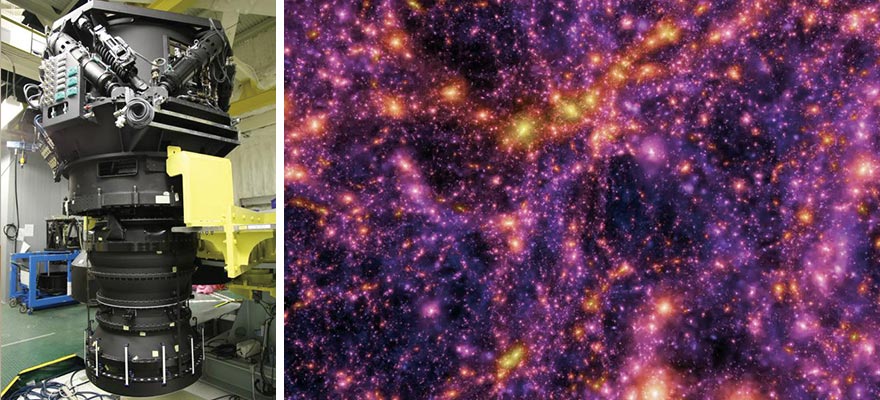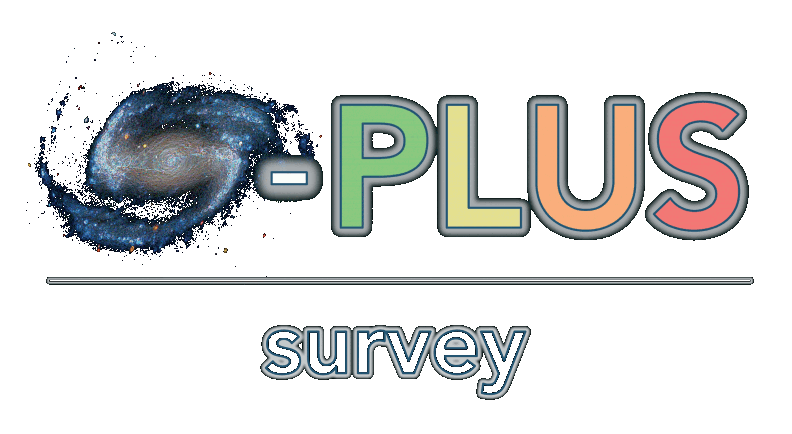Posters

In the past few years I have been increasingly devoted to observational efforts in cosmology. The main goal of these projects is to shed light on the "dark sector" of the Universe -- dark energy and dark matter.
The main goal of these astrophysical surveys is to map out bright objects such as galaxies, quasars and supernovae. In the past years a new generation of telescopes and instruments were developed to tackle large-area surveys and optimized for cosmological applications. Here are some of the main projects that I have been involved with:
1. J-PAS (Javalambre Physics of the accelerating universe Astrophysical Survey). This innovative instrument was built in a collaboration between Spain, Brazil and other countries. Our 2.5m telescope has a wide field of view (nearly 3 degrees), and a large panoramic camera with more than 1.2 Giga pixels. J-PAS will observe thousands of square degrees of the sky using 56 "colors" (narrow-band optical filters), which allows us to take "pseudo-spectra" of all detectable objects. J-PAS is starting full operations at the end of 2022, so keep tuned for many news starting in 2023! More information on the J-PAS website.

2. PFS/SuMIRe. That instrument is an optical fiber multi-object spectrograph that is now mounted on the Subaru telescope (which has an 8m mirror and is located in Hawaii). The team that built that amazing instrument includes members from Japan, USA, France , Taiwan and Brazil. Check out the SuMIRe website.

3. S-PLUS (Southern Photometric Local Universe Survey) is a survey conducted from an 0,8 m telescope in Chile. Like J-PAS, it will also observe the sky using narrow-band optical filters. Besides observing a part of the sky which is relatively unexplored in terms of cosmological surveys (that which is observable from the Souther hemisphere), S-PLUS can also complement other observations such as those from the Rubin Observatory LSST. More information on the S-PLUS website.

